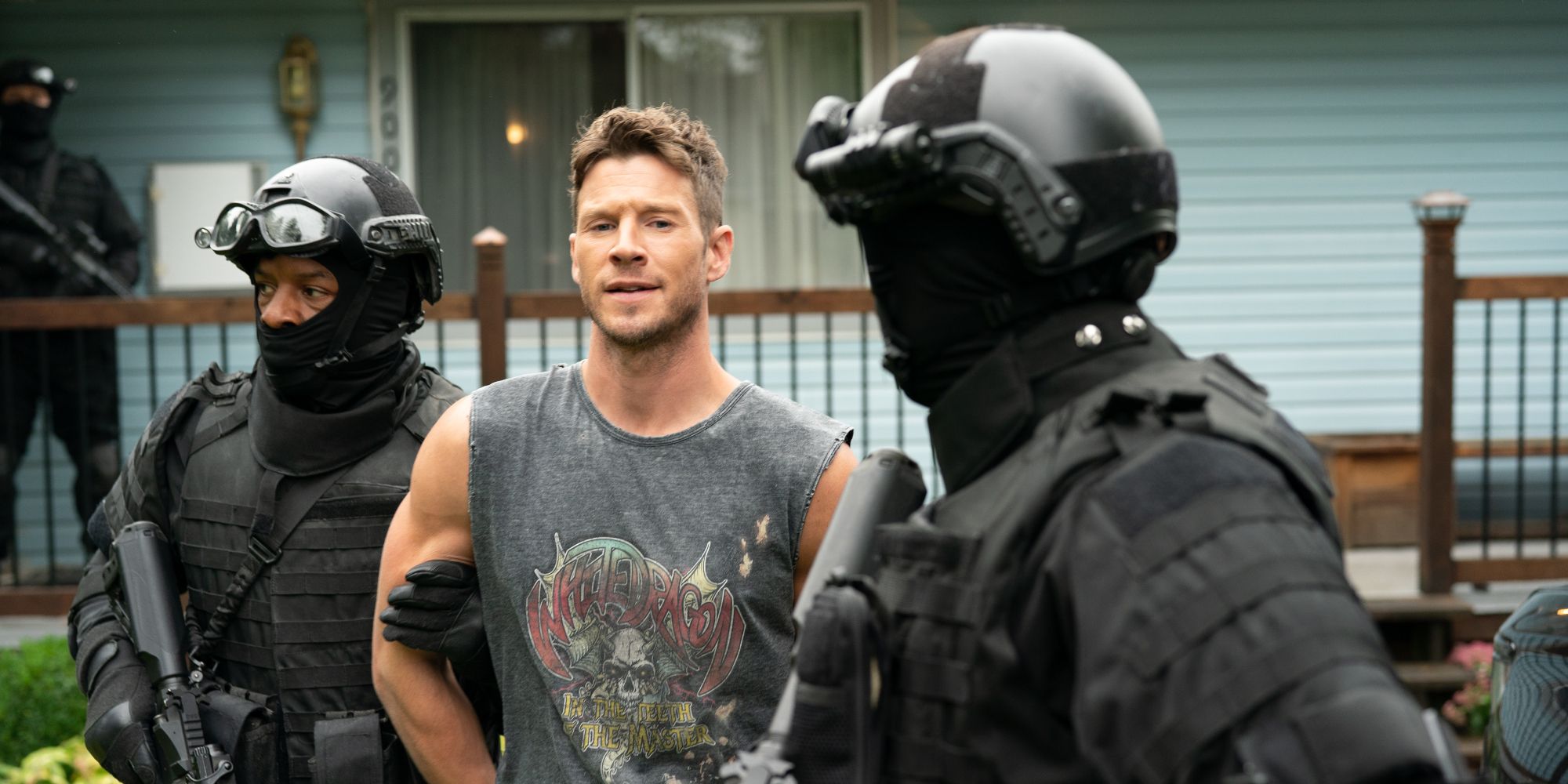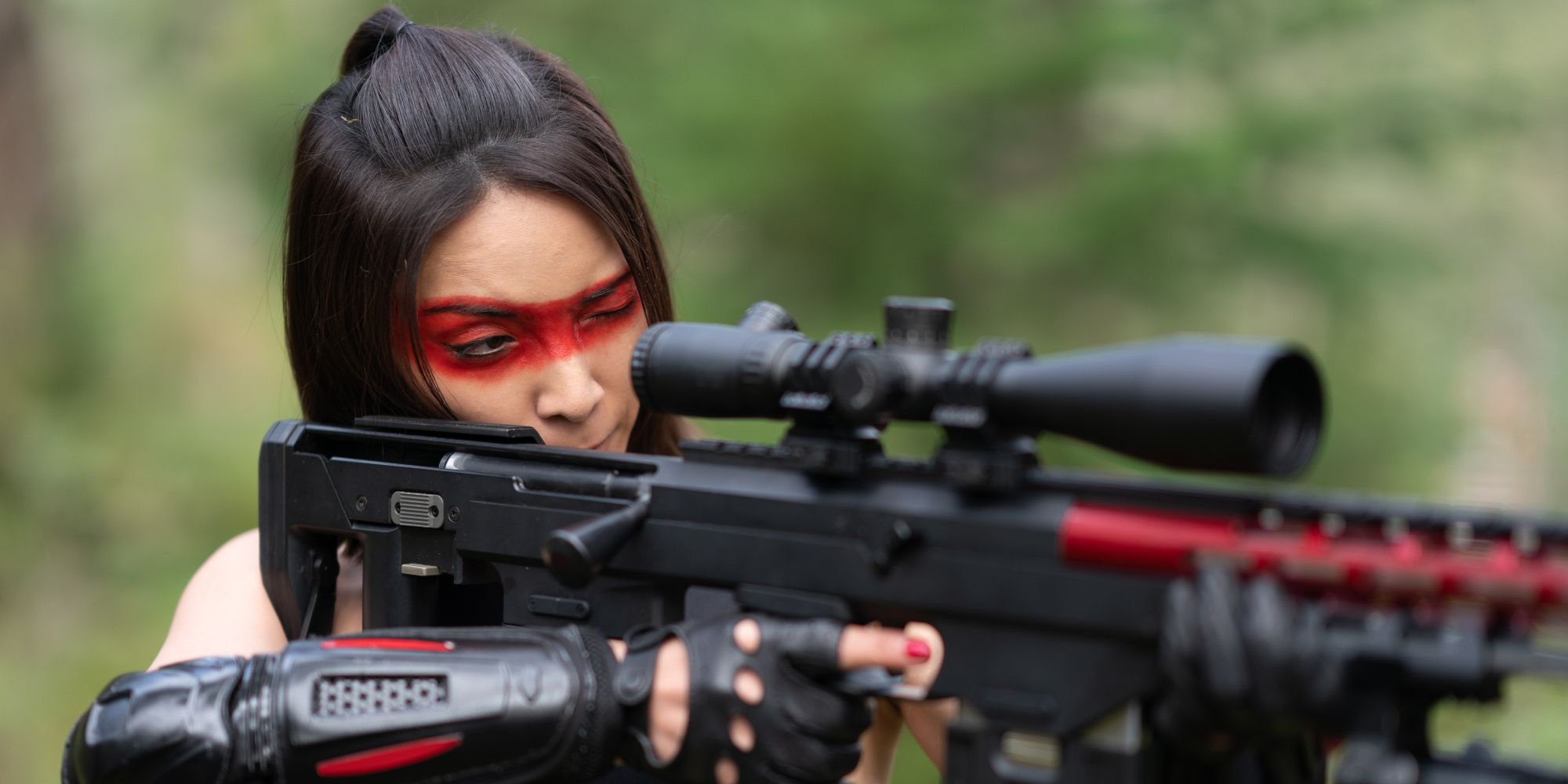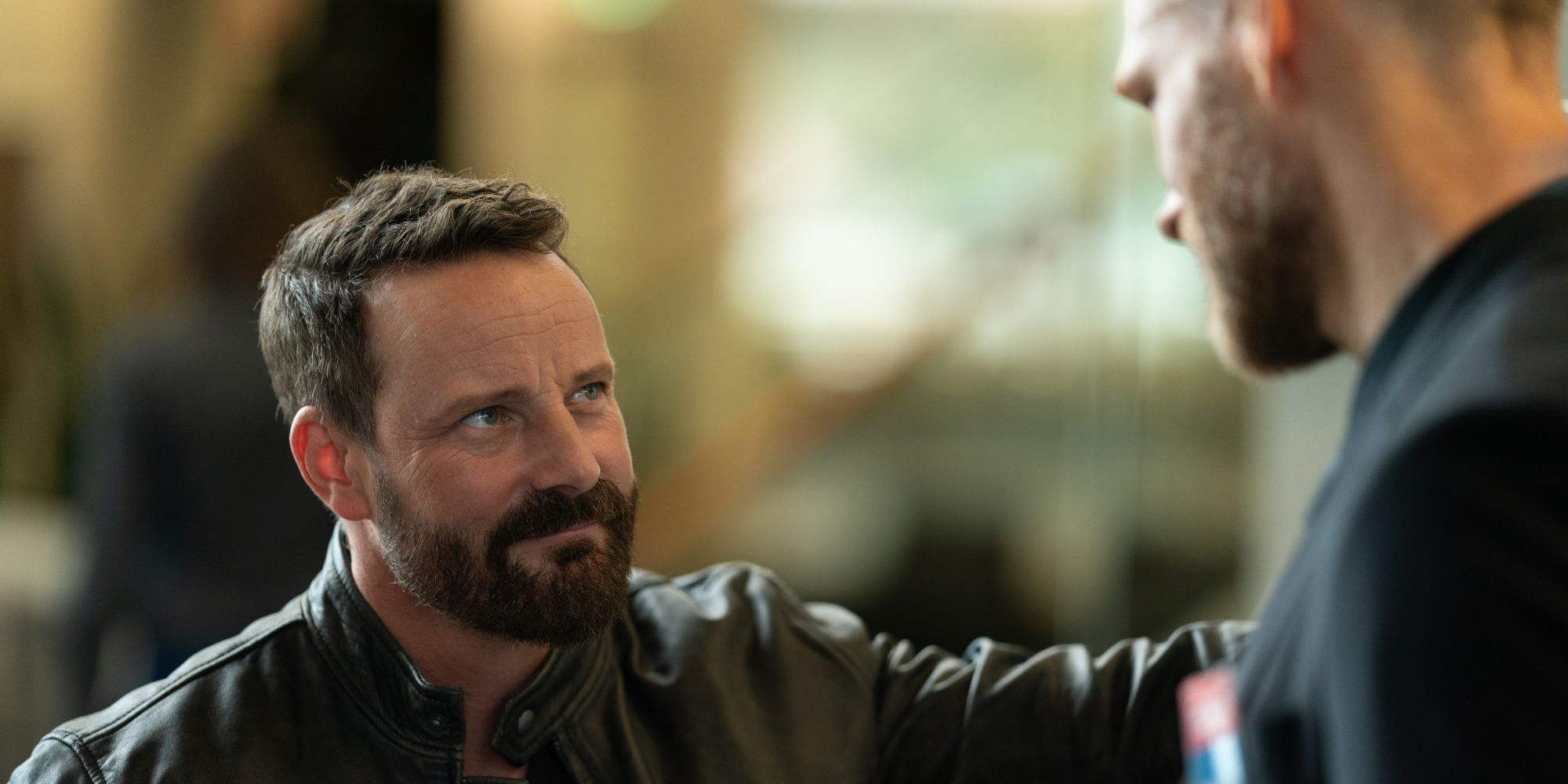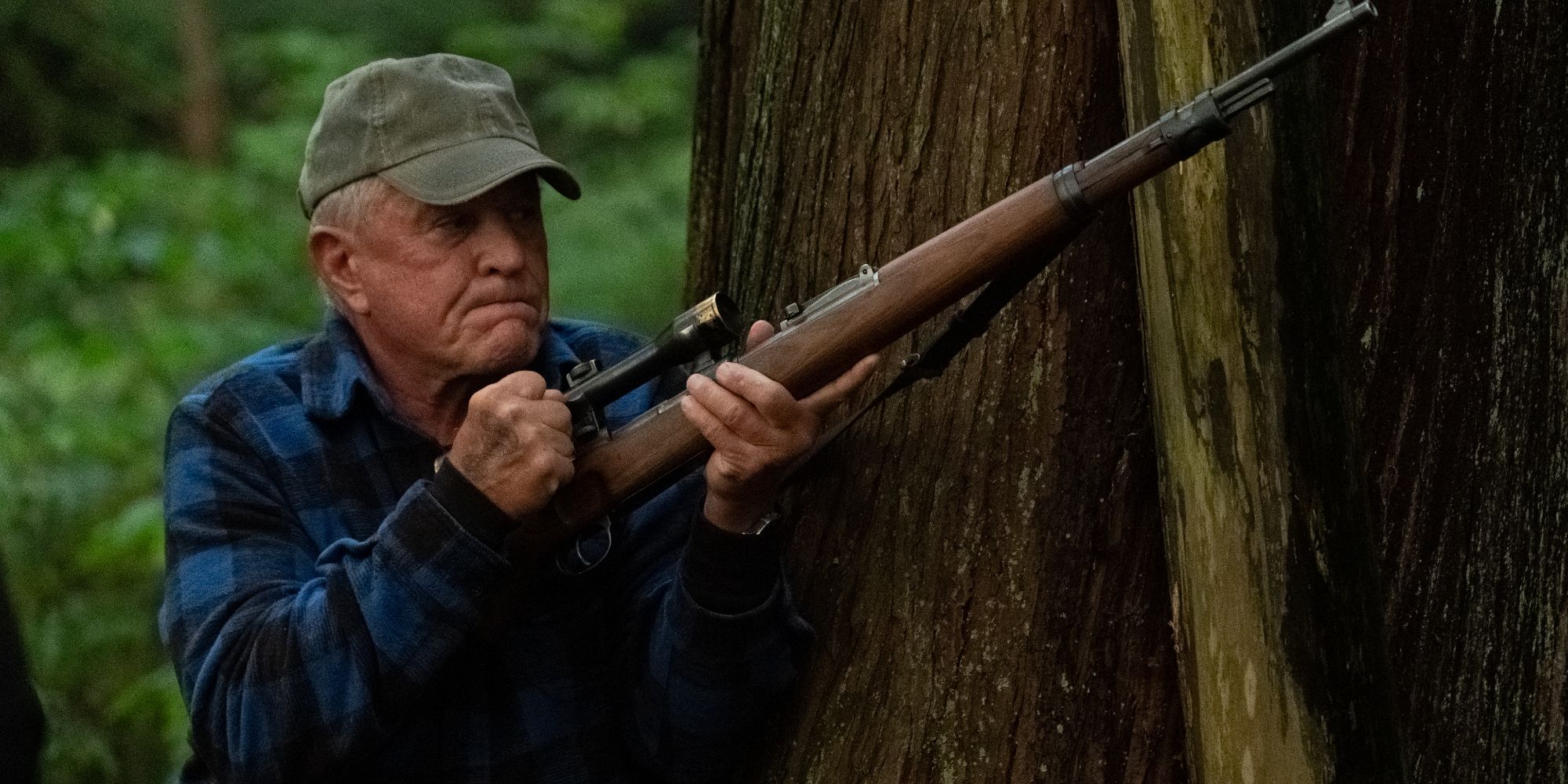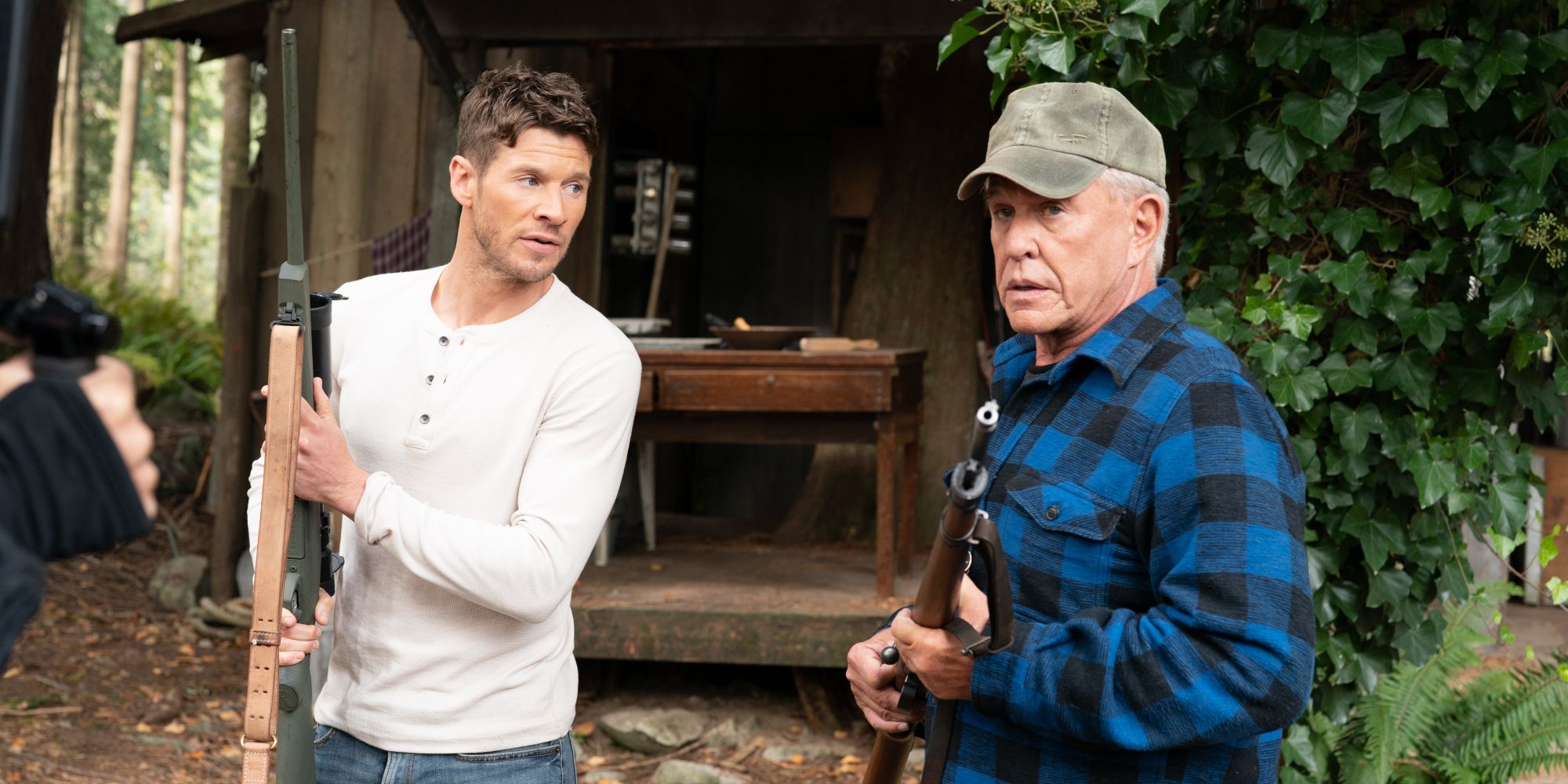It's doubtful anyone involved with the original Sniper foresaw it would spawn a franchise that would still be running 27 years later. The latest entry Sniper: Assassin's End marks the eighth entry in the series, which has evolved in unique ways since the 1993 original. The first three movies were star vehicles for Tom Berenger (Inception), who played Marine sniper Thomas Beckett. Berenger brought a haunted, world-weary quality to Beckett that made the character unique among other action heroes.
Chad Michael Collins (Call Of Duty: Modern Warfare) inherited the series with 2011's Sniper: Reloaded, which followed Beckett's estranged son Brandon; this fourth entry also featured the return of Billy Zane's Miller from the original film. Both Berenger and Zane would return in varying combinations in later sequels, with 2017's Sniper: Ultimate Kill being an Avengers: Endgame-style affair that brought all three characters together. Sniper: Assassin's End sees Brandon on the run after being framed by a hitwoman named Lady Death (Sayaka Akimoto). Brandon turns to his father Thomas for help while Homeland Security Agent "Zero" (Ryan Robbins) uncovers the conspiracy that's setting up Brandon for the fall.
Sniper: Assassin's End marks director Kaare Andrews first time with the franchise. Andrews is also a renowned comic book artist and writer, having worked with such iconic characters as Spider-Man, Iron Fist and the X-Men. Screen Rant spoke to Kaare Andrews about his fandom for the Sniper series, bringing his own style to the franchise and the challenge of squeezing so much action into a tight schedule.
Sniper: Assassin's End is out now on Blu-ray, DVD and Digital.
Were you familiar with the series before signing on for Sniper: Assassin’s End?
I have very vivid memories of watching the original Sniper back in my best friend’s basement during highschool. That original film made a pretty big impact in its day, with the character dynamics between Berenger and Zane, mixed with a unique kind of soldier specialist. It was something we hadn’t really seen before in pop culture. Who knew that 27 years later, I would be directing the new Sniper film? How many franchises have lasted three decades? A handful? I find it fascinating that it was this series that has stood the test of time.
You know, amazingly, many years ago during the Banff Film Festival I randomly found myself having lunch with the DP of the original, Bill Butler. There was maybe four or five of us newbies that got to talk with Bill and of all the movies we could have talked about him working on from Grease to Jaws to Child’s Play, we ended up talking Sniper. And he explained some of the trick photography they were doing on that movie. Shots like the bullet flying across the jungle. And how they had mounted the bullet on a glass rod and attached it to the tripod and just sort of panned across the jungle. I’ve always loved the mechanics of these visuals. At the time, it was a high-tech shot! And that rod of glass read like on-screen bullet contrails.
Now I’m not saying the world was preparing me for this film. I’m only saying that we are obviously living in Elon Musk’s computer simulation and he’s writing us some interesting code.
Your previous directorial work has largely been in the horror genre, such as Cabin Fever: Patient Zero. Were there any particular challenges in making the switch to action?
I’ve dabbled a little in horror filmmaking but I’m also a lifelong fan and student of action films. This is my first real entry into the genre but I’ve had a lot of overlap in my work, especially with some of the TV series I’ve directed. Working with fight choreographers, stunt performers and special effects artists is always such a pleasure.
Personally, I’ve trained a little in various forms of martial arts, from Karate to Tae Kwon Do to Pankration, have been a big fan of MMA for many years and grew up obsessed with ninja’s. So, it was all very copesetic. And actually, I had an original project in development with Gale Anne Hurd called The Hunted, which was going to be a modern re-exploration of what a ninja might be in today’s world.
And in my comic book work, I’m constantly deploying crazy super-powered action scenes, whether its Iron Fist running up the side of a building to battle robot soldiers descending from attack helicopters or turning Spider-Man into a Japanese ninja avenging the death of his Sensei, Ben. There really wasn’t a switch to be made, so much as a project to be found to utilize my love of the genre.
Part of what drew me to the script for Assassin’s End was the martial arts elements. I’ve had this other film in me for many years, The Hunted, this was a great project to let loose a little of that built up ninja energy.
A little more time and a little more money, and I’m ready for a full ‘ninja flex’. Maybe throw in some robots. Just give me an excuse.
Sniper: Assassin’s End feels more stylized in its approach than past entries, from its use of color to the action sequences. Was this a conscious move to bring your own visual stamp to the series?
Part of my training as a comic creator is to continually look for ways to re-invest in the core concept of these long running characters. In Spider-Man: REIGN I took “with great power, comes great responsibility” and investigated it in a new way. I asked what if Peter didn’t have the power to save MJ? What if, in fact, he was inadvertently responsible for her death? With no power, is there no responsibility? With Iron Fist I went back to his origin and re-invested in the concept of “choosing revenge over immortality.” If you can identify the core of these stories, you can just keep exploring them deeper and deeper.
I approached this film in the same way. The script was already completed by Oliver Thompson, who did a great job, but I spent a great deal of research into the franchise and in particular, that first film. I studied the visual vocabulary of that film, and tried to expand it outwards. Things like the bullet POV shots, the ghillie suit coming up out of the brush, the ejected shell catches. I love when you can echo an aesthetic across films. But you have to do more than just echo the things you love; you have to find a new way to do them, too.
For instance, in the first film they created a sort of bullet POV shot by flying a 35mm film camera on a guided wire. They weren’t able to cover a lot of distance but the idea of the shot was inspiring. For us, we mounted tiny 4K cameras on mini-drones and flew them right into stunt performers.
Here’s another example. In that first film, Berenger’s character famously gets his trigger finger cut off. And in every movie that’s followed, poor Tom Berenger has had to fold his trigger finger back into his hand for every scene and position the camera so it looked like it was missing. But I wanted to show that trigger finger up close. And I didn’t want to CG it off. I remember explain this to Oliver during a location scout that I was sure we could find a hand double, when our driver, Razor, turned to us with his missing finger, “like this?”. Now first of all, it was most amazing that our driver was named Razor. But secondarily, he lost his finger in an accident at his sister’s farm many years ago. So, for the first time in Sniper history we can feature a fingerless Thomas Beckett in a stunning close-up as he taps it against his sniper rifle, in anticipation of getting off a deadly shot.
So, part of the work, and also the fun, is to expand outwards. Some of the previous films were very big in scale, with large armies across the world, but this film was more contained. It wasn’t one of the Beckett’s deployed across some foreign continent. It was a man on the run who needs to turn to his father for help. That father and son dynamic was so important, it’s no mistake the film is being released in time for Father’s Day.
Knowing we couldn’t compete with swathes of helicopters and tanks; you look for other ways to compete. Style. Aesthetic. Framing. I started to talk about this film as an “Action Noire.” Especially so, when working with my DP, Stirling Bancroft. Now I don’t know how well you know the Noire genre but it was created as a reaction to lack of resources. They were only given one big light to make those movies, and they used that big light to create style and play with shadows. They leaned into their restrictions to create a unique aesthetic. That’s the same spirit I employed with Stirling, as we looked for ways to honor the franchise but build it outwards, to look for opportunities to create signature visuals. What’s an Action Noire? We made it up. But it was language we created to frame our aesthetic choices. And language creates reality.
For instance, we decided that the opening scene would be just red light as Lady Death slinks up to her sniper position in her black kill suit. In post, for a little flair, I added a single blue streak that pulses across the shot. I have no idea what that means… but it means something. And it’s especially those moments where you can’t explain why something has to be a certain way, but also knowing that it has to be there—that’s what I look for.
Did you have any movie influences on the look of Assassin’s End? The convoy ambush feels like a nod to Michael Mann, for instance.
Oh sure. Part of the problem with Michael Mann is he created the greatest street shoot-out in film history. So, whether you react against it or lean into it, it’s still there the entire time, hanging over your head. I try not to get caught up in that sort of thing as direct homages aren’t usually my intention. But I actually brought Heat back out to use as a production guide and figure out things like how many bullet hits per minute of screen time. And to decide how much digital versus practical gun play we could afford. Our budget was so tight, I literally had to account for every bullet hit as a hard cost.
As I said earlier, the biggest influence was that first Sniper. But you’ll probably find some nods to Nicolas Winding Refn, James Cameron, Mamoru Oshii, to Aronofsky and Fincher. I wouldn’t know where to look for any of their specific influences but I’m sure they are there. Man is not an island and you really are a result of the stew of those who came before you. I have this weird idea that art is a parasite. And when you respond to a work of art, you respond with an urge to do something yourself. Long after you are dead, this sort of wave of inspiration keeps travelling among us.
What was it like trying to pack the movie’s many action scenes into an eighteen-day schedule?
There is never enough time. That is one of the first lessons you learn on a film set. You know, just today I ran across an interview with the director of Revenge Of The Ninja, Sam Firstenberg, and even back then on a low budget Cannon movie they had nine, six day weeks. I have an unironic childhood love of those ninja movies from back in the day, but even then, I recognized they were shall we say, a little on the cheap side.
We had a third of that time.
Add to that actor availabilities, international travel and trying to fight for enough time to properly build, learn and rehearse the fight choreography with the amazing Brett Chan, it was tough. But if you can’t do tough, you can’t do these movies.
The way to overcome these challenges is to be very rigid about production, while at the same time be extremely flexible. “Be as water my friend, like water put water in a cup, it becomes the cup. Water can flow or it can crash.” Bruce Lee was right. We designed these fights, found the time to shoot them and adjusted to any and all shooting circumstances, not by recoiling in fear but by charging towards them in strength.
Both Chad Michael Collins and Sayaka Akimoto threw themselves into fight rehearsals. They were complimented with an amazing stunt team and we carved out as much time to shoot as we could afford. We pushed our modest budget as hard as we could and leaned into some guerilla filmmaking for some of our break-away sets.
I try not to focus on the results but the process. And perversely, the hard things are also the fun things. The things you can find some meaning out of. There is very little meaning in an afternoon nap, but you run a marathon and cross the finish line in a heaving lump? You earned that.
So, you may find yourself shooting though hail in the morning and sunny skies in the afternoon, all during a highly orchestrated shoot-out you designed weeks earlier with store bought Playmobile vehicles and characters. I have pictures! But it’s all so much fun because it’s all so hard. Someone else asked me the other day how I handle stress in a shoot. The trick is, you look for stress. You want it. It’s addictive and becomes almost like a drug.
But I also have a unique artistic background which leads to a lot of unnatural advantages. I can draw my own shots, design costumes, sets, vehicles, storyboard and even create temp VFX. The editor I worked with Greg Ng, also has a great ability at temp VFX. We did the whole movie, trading shots in our edit. That really comes in helpful when you hand your final shots over to a VFX facility. It takes away a lot of guess work. The money you spend in VFX is really for iterations, not the shots themselves. The more clearly you can draw you targets for them to hit, the more effective the process. The most expensive thing you can tell a VFX vendor is to say, “I’m not quite sure what it should look like.”
Was there ever a discussion about bringing back Billy Zane’s Miller for this entry?
You’ll have to ask Sony or Billy Zane about that. It was all worked out before I came on board. Personally, I’m a huge fan of Billy Zane and would love to work together on a project in the future. From Titanic to The Phantom, he has a real movie star presence on screen. Both Zane and Berenger seem to have sort of gone back and forth, trading movies as the series has progressed.
The movie switches up the formula with the introduction of Ryan Robbins’ sardonic Agent Zero. Can you discuss this character and what he brings to the story?
Ryan Robbins is one of Vancouver’s most talented actors. I’ve known Ryan for many years and we’ve always looked for a project to team-up on and luckily for us, Ryan was available. Ryan’s great strength is he is a character actor but with a real physicality. You can buy him as someone with means. He’s charming but dangerous. Funny but intense. Again, the new characters of Agent Zero and Lady Death were an opportunity to honor the Sniper franchise and expand it outwards.
You’d have to ask Oliver, but I believe there is a lot of Daniel Mondschain, our Sony production executive, in the character Zero. I know for a fact a few of Daniel’s persona zingers found their way into the script and onto the screen.
Zeke Rosenberg or “Zero” brings a new flavor to the series. He’s Homeland Security, so he can operate on US soil. When he sets out on his mission, he’s hoping Brandon is innocent but ready to act if he’s not. Always ready to call a spade a spade, he’s really a detective and constantly “Zero-ing In” on the villains.
I’d love to see his character continue on. Both him and Lady Death really brought a fresh feel to the franchise and compliment Brandon very well.
And just to spend a small moment on Chad. He was an amazing presence on set. So ready, so cheerful, so committed. He really set the tone for every day and night on set. And it was a surprise to see how funny he can be. You know, in that original Sniper there was a fair amount of fun, watching Billy Zane’s character try to keep up with the bad-ass Berenger. It was important for me to try to get some of that ‘fun’ back into the series. Especially in today’s world, I wanted this movie to be a bit of good-hearted escapism.
There’s a few easter eggs sprinkled throughout Sniper: Assassin’s End, like Thomas Beckett reusing the German rifle he acquired in Sniper 2. Are there any others that fans should look out for?
So many. When Thomas uses that German rifle, his son has the rifle from the first film. And during the same scene, Brandon is wearing his dad’s old jacket, also from Sniper 2. We have echoes of bullet catches, ghillie suits, bullet POVs, what else…
Oh, here’s a funny one. When we first meet Brandon in this film, he’s playing a video game which is obviously a fun indirect nod to Chad’s work in Call Of Duty. But also, in that same scene he’s wearing a shirt that was originally scripted as “Metallica." Not having the resources to pay Metallica, we created our own band as a sort of homage to Metallica and bands like White Snake—called White Dragon. I got Oliver Thompson, who is a real music guy, to design the logo and we kept following the trail! I printed up extra shirts for myself, Oliver and Stirling to wear on set and then we got Oliver to write some original White Dragon songs to play in the car of a character we call “Stoner Kind.” I love those sorts of in-jokes. Look for a White Dragon sticker on Stoner Kid’s car, too.
But we also added a lot of details to the things in the movie. In Thomas Beckett’s cabin, I asked them to create a military modelling station for Thomas. I imagined him not only fishing and hunting but making model tanks. This was a pretty big hobby in the 80s and I imagined a character like his might get interested in military history and modelling during his retirement years.
All of its important, even if it doesn’t seem obvious, because you are world building. And the real world, has layers and layers of intention and meaning. When you do a film you want to chase out as much as you can, at least as much as your time and resources will allow.
This is Tom Berenger's sixth time playing Beckett. What kind of discussions did you have with him about the character for this chapter, which sees him and Brandon form a closer relationship?
This whole entry is about a father and a son. Here you have two of the most badass characters in film history. They’ve killed many enemies, survived as much as you could ever throw at them. How to you create stakes for these sorts of super heroic characters? Well as a father, I can tell you pretty easily. Put the son in danger. And as a son, you put the father in harm’s way. That’s what drove the stakes in every scene. And even when the characters were together, it was their relationship that was at stake. Thomas was pretty much an absentee father. He has some things to atone for and this movie gives him the chance to do that. Like I said, it’s no mistake this film is targeting a Father’s Day release.
Berenger was such a pleasure to work with. I remember that first day he showed up on set, it wasn’t anything special. not until I called action. And when I saw him on screen, on my small hand-held monitor, he just sort of jumps out at you. A real movie star. We don’t have many of them left and he’s the real deal.
Sniper: Assassin’s End’s final scene implies at least one more movie to come; do you know where the story will go next and would you be up for a return?
You’ll have to ask Sony about that. They have their own hordes of corporate assassin’s that are sent out when any of their secrets are leaked. Just ask Jonny Jo-Jo. Never heard of him? Exactly…
Do you have any other projects lined up?
Always. As always, my creative life is a non-stop flow from comics to film and then back again.
Sniper: Assassin's End is out now on Blu-ray, DVD and Digital.

